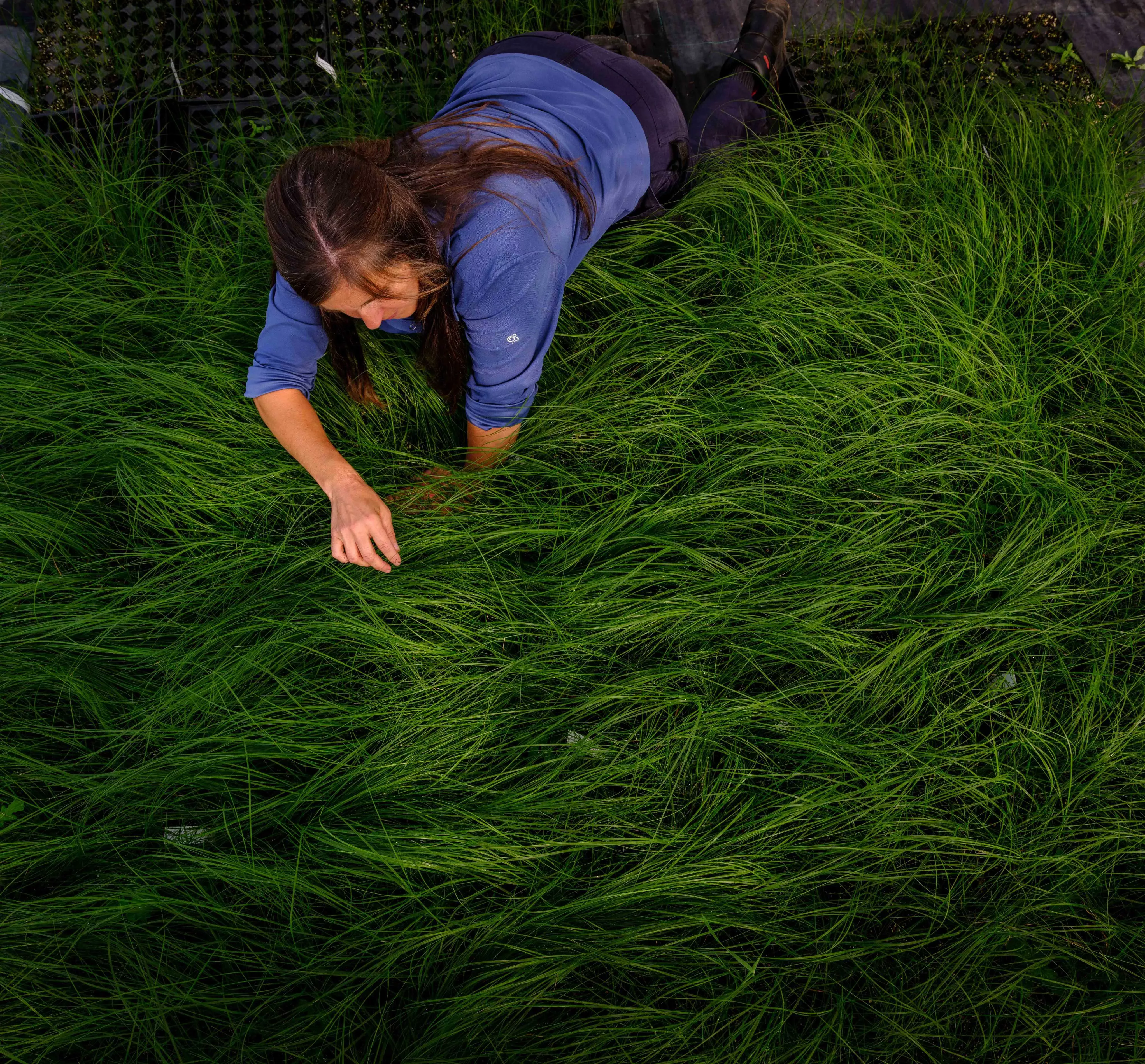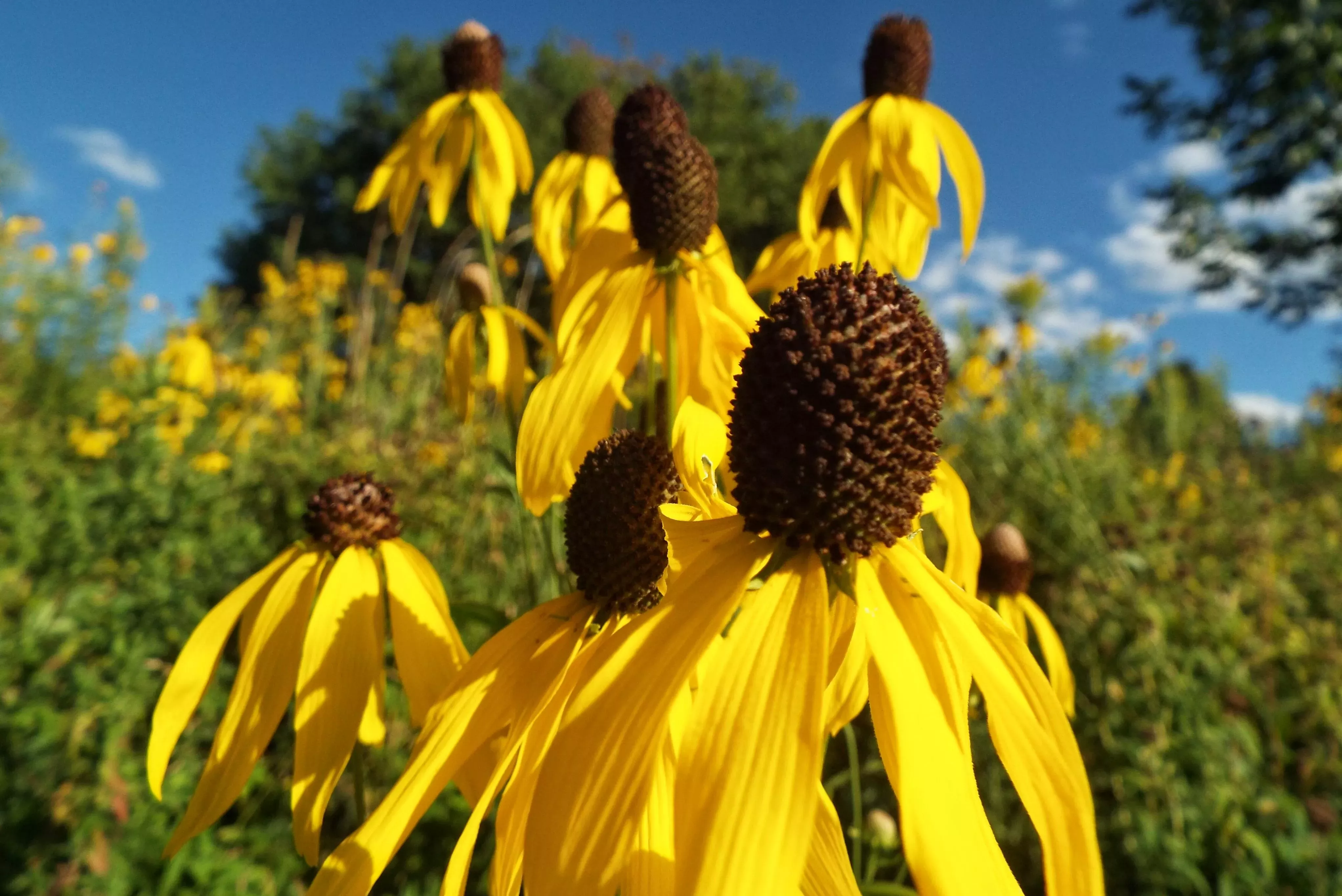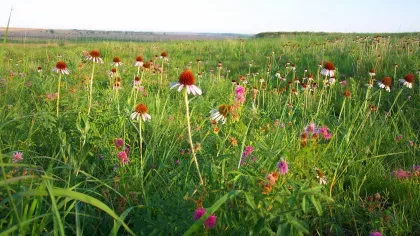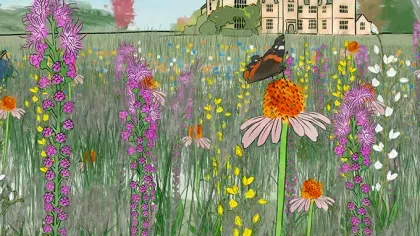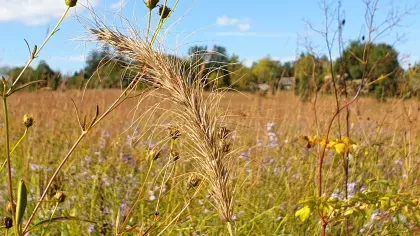12 October 2020
In Pictures: Sowing the American Prairie
A behind the scenes look at the first sow of our new American Prairie at Wakehurst.

Our American Prairie is taking shape right before our eyes.
Spanning six acres, this conservation landscape sits centre stage in our wild botanic garden.
Take a sneak peek at what we've been doing to create our new prairie at Wakehurst, including sowing the first seed and caring for live plants in our nursery.
Seed preparation
In September came the first sowing of our sweeping grassland.
The prairie seeds, many gathered on our seed collecting trip to North America, were stored in the drying room of our Millennium Seed Bank in optimum conditions.
These seeds, including prairie dropseed (Sporobolus heterolepis), were then retrieved in preparation for the sowing.


Our horticulture team checked the species to make sure the correct seeds were coming out of storage.

One of the zones of our new landscape is the South Central Tallgrass Prairie, which will showcase plants from this habitat in North America.
To recreate this wild landscape here in our gardens, the various seeds to be sown had to be blended in the perfect ratio of the different plant species.
Mixed by hand, the seed blend was then put into large barrels for further mixing and transport.



Soil scarification
The prairie ground was scarified to prepare the soil for sowing, and again afterwards to bury some of the seed.
This process, which breaks up the top level of the soil, can help encourage seed germination.

Sowing the seed
Before sowing, the seed was mixed with horticultural sand to help create a smoother coverage.
A hopper was then used to sow the seed...


...which was also done by hand.
Sowing by hand ensures an accurate finish, particularly near the edges of the landscape.


Once the seed was sown and after the second scarification, the seed beds were covered in a double layer of fleece.
This protects the germinating seeds from being eaten by birds, including our resident geese, and also traps a welcome layer of moisture to improve growing conditions.
This fleece has to remain in place for a few weeks.

In the nursery
Some of the seeds for the American Prairie are not being sown but are growing in our nursery and will be planted directly in the landscape at a later time.
The reason that some plants are sown direct while others are raised in the glasshouse is to accelerate the establishment of harder-to-grow species and recreate the complexity of a mature prairie quicker.
To help speed up germination, the hard shell of the nursery plant seeds is chipped away, echoing the processes that naturally occur in the wild during winter.
Tweezers and scalpels are the handy tools used to break the seed coating.

Once the seeds have germinated, they are ‘pricked out’ into plug trays to give them more space to develop.
Little bluestem (Schizachyrium scoparium), white false indigo (Baptisia alba) and rough blazing star (Liatris aspera) are some of the species currently growing in our nursery for the prairie.


Seedlings are sometimes put into growth chambers which create optimum light and temperature conditions for the plants to thrive.

The live plants are then cared for in our glasshouses with weeding and watering.
In spring, these plants will be ready to join the prairie landscape with the first live plant layer.
Watch our animation to see how our American Prairie will transform
